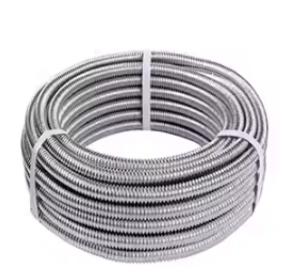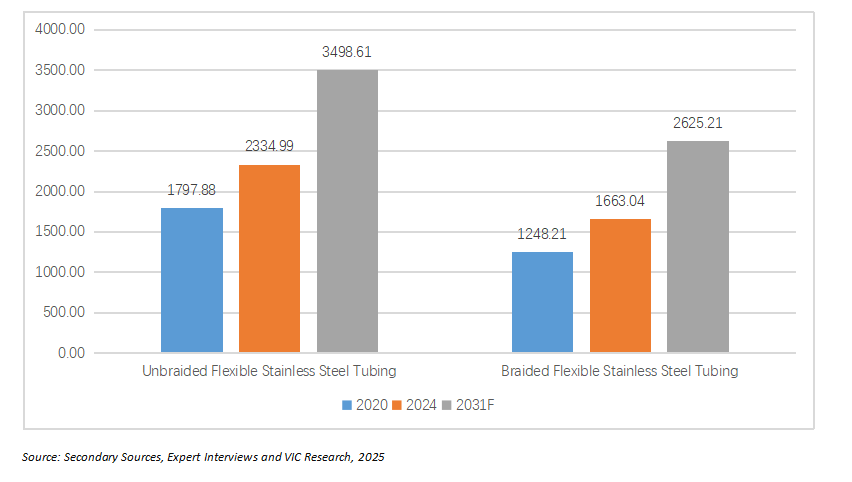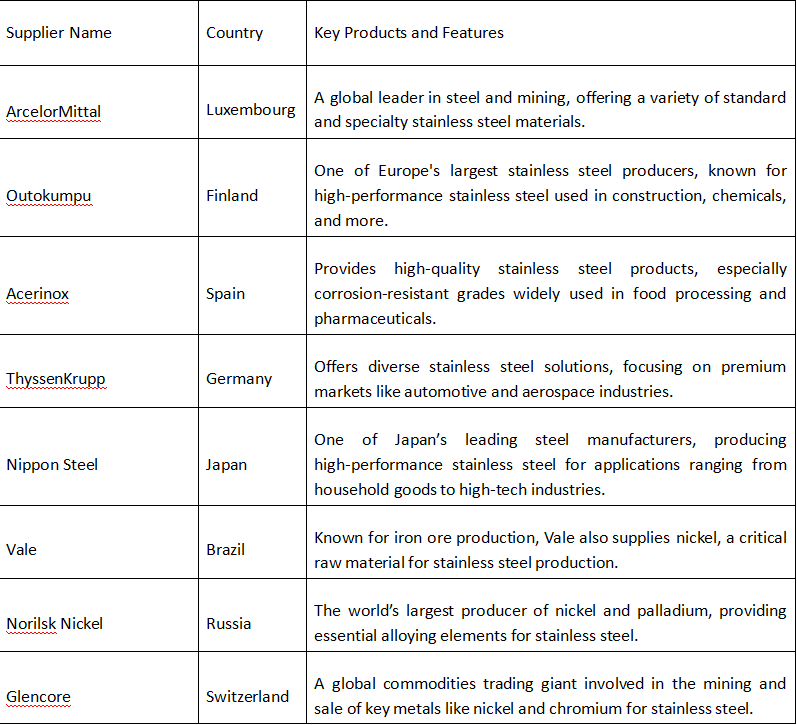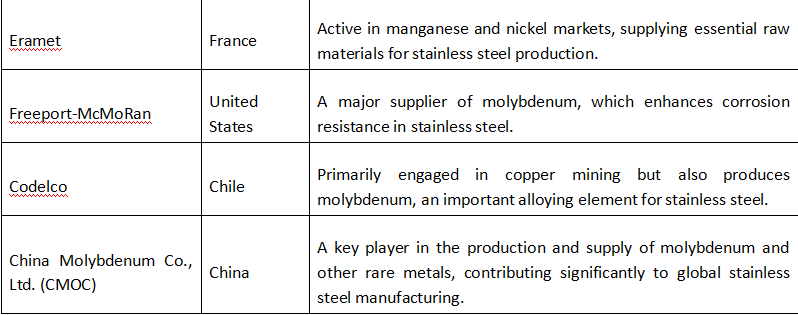Times:2025-04-16 22:35:23
The global Flexible Stainless Steel Tubing market was valued at US$ 3998.03 million in 2024 and will reach US$ 6123.83 million by the end of 2031, growing at a CAGR of 6.16% during 2025-2031.
First, in terms of market growth and dynamics, there has been a steady increase in demand due to the rising need for durable and corrosion-resistant materials. The expansion of global infrastructure projects and stringent safety regulations have further propelled market growth. Technological advancements have also played a critical role, with innovations in material science leading to the development of advanced alloys that enhance the versatility of flexible stainless steel tubing. Additionally, the adoption of smart manufacturing technologies has improved production efficiency and quality control processes.
Second, regional trends indicate that the Asia-Pacific region has emerged as a leader due to rapid industrialization and urbanization in countries like China and India. North America and Europe have also shown strong growth, driven by high standards in healthcare and automotive sectors. However, the industry faces challenges such as high production costs associated with raw materials and energy-intensive processes. Supply chain disruptions and environmental concerns have also prompted the industry to adopt more sustainable practices.
In terms of the competitive landscape, the market is highly fragment, the top five manufacturers held 16.20% of the market, in terms of Flexible Stainless Steel Tubing revenue in 2024. These companies focus on innovation, strategic partnerships, and mergers to stay ahead. Customization and meeting specific industry needs are critical strategies for differentiation in this competitive environment.
Looking toward 2031, the flexible stainless steel tubing market is expected to continue its upward trajectory, supported by emerging trends such as increased demand in developing regions like Southeast Asia, Africa, and Latin America, where investments in infrastructure development are growing. Green initiatives emphasizing sustainability will drive the adoption of eco-friendly production methods and the increased use of recycled materials. Additionally, advanced applications in niche markets, including renewable energy and biotechnology, offer new avenues for expansion.
Flexible stainless steel tubing is constructed from stainless steel alloys, often with a multi - layer structure including an inner layer, an outer layer, and sometimes a braided middle layer. Its main elements like iron, chromium, nickel, and potentially molybdenum endow it with remarkable properties. It resists corrosion effectively due to the chromium - formed oxide layer, offers high flexibility for easy bending and routing in tight spaces, has good strength to endure high pressures and tensile forces, and can operate across a wide temperature range. This tubing finds applications in plumbing and HVAC for connections, in automotive and aerospace for fuel and hydraulic lines, in medical and food industries for its biocompatibility and hygiene, and in electrical systems for wire protection, making it a highly versatile option across numerous industrial and commercial sectors.
Stainless steel 321, 304 and 316L are all common materials for flexible stainless steel hose.
Figure 1. Flexible Stainless Steel Tubing Product Picture


Flexible stainless steel tubing is a vital component in general industrial applications, particularly in sectors such as steel and metal production, petrochemicals and oil refineries, and paper and pulp manufacturing. These industries operate in demanding environments where equipment must withstand high pressures, extreme temperatures, and exposure to corrosive substances. Stainless steel tubing’s inherent properties—corrosion resistance, durability, and flexibility—make it an ideal choice for transferring fluids, gases, and chemicals safely and efficiently. Its ability to maintain performance under harsh conditions ensures reliable operation, reducing downtime and maintenance costs while enhancing overall productivity.
In the steel and metal industry, flexible stainless steel tubing is used in hydraulic systems, lubrication lines, and cooling circuits, where its resistance to abrasion and mechanical stress is critical. It can handle the high-pressure demands of heavy machinery while withstanding exposure to heat, sparks, and chemical agents commonly found in metal processing facilities. Similarly, in petrochemical and oil refinery applications, the tubing is employed in the transfer of crude oil, refined products, and aggressive chemicals. Its resistance to corrosion, particularly when made from grades like 316 stainless steel, ensures compatibility with acidic and chloride-rich environments, making it indispensable for maintaining safety and efficiency in these high-stakes operations.
The paper and pulp industry also benefits significantly from the use of flexible stainless steel tubing. This sector involves processes that require the handling of water, steam, and caustic chemicals, all of which can be highly corrosive. Stainless steel tubing’s resistance to chemical degradation and its ability to withstand high temperatures make it suitable for use in bleaching, pulping, and drying systems. Additionally, its smooth interior surface prevents the buildup of residues, ensuring consistent flow rates and minimizing contamination risks. The tubing’s flexibility allows it to be easily installed in tight spaces or around complex machinery, further enhancing its utility in industrial settings.
The production of flexible stainless steel tubing relies heavily on a few key raw materials, which are critical to ensuring the tubing's performance characteristics such as flexibility, strength, corrosion resistance, and durability. Below is an overview of the primary raw materials used in the industry, along with notable suppliers.
1. Stainless Steel Alloys
Key Types: The most common stainless steel grades used for flexible tubing include 304, 304L, 316, and 316L. These alloys are chosen for their excellent corrosion resistance, weldability, and mechanical properties. Grade 316/316L, in particular, contains molybdenum, which enhances resistance to chlorides and harsh environments, making it ideal for marine and chemical applications.
Suppliers: Major global suppliers of stainless steel alloys include ArcelorMittal, Outokumpu, Acerinox, ThyssenKrupp, and Nippon Steel. These companies provide high-quality raw materials that meet stringent industry standards for chemical composition and mechanical properties.
2. Nickel and Chromium
Importance: Nickel and chromium are essential alloying elements in stainless steel. Nickel improves ductility and corrosion resistance, while chromium forms a passive oxide layer that prevents rusting. The proportion of these elements in the alloy determines the tubing's performance under extreme conditions.
Suppliers: Leading suppliers of nickel and chromium include Vale (Brazil), Norilsk Nickel (Russia), Glencore (Switzerland), and Eramet (France). These companies play a crucial role in ensuring a stable supply chain for stainless steel manufacturers.
3. Molybdenum
Role: Molybdenum is added to stainless steel grades like 316/316L to enhance pitting and crevice corrosion resistance, particularly in chloride-rich environments such as seawater or chemical processing. It also improves high-temperature strength.
Suppliers: Key molybdenum suppliers include Freeport-McMoRan (USA), Codelco (Chile), and China Molybdenum Co., Ltd. (CMOC). These companies provide high-purity molybdenum to ensure the quality of stainless steel alloys.
4. Other Additives and Coatings
Additives: Elements like manganese, silicon, and carbon are often added in small quantities to modify the properties of stainless steel, such as improving hardness or machinability.
Coatings: In some cases, additional coatings (e.g., PTFE or other polymers) are applied to the outer or inner surfaces of the tubing to enhance chemical resistance or reduce friction. Suppliers of these coatings include DuPont, 3M, and Saint-Gobain.
Notable Integrated Suppliers
Some companies operate as integrated suppliers, providing both raw materials and finished tubing products. These include:
Sandvik: A global leader in advanced stainless steel and alloy solutions, offering high-performance materials for flexible tubing.
Tubacex: Specializes in stainless steel and alloy tubes, serving industries like oil and gas, petrochemicals, and power generation.
Sumitomo Metal Industries: A major player in the production of stainless steel tubing with a focus on high-quality alloys for demanding applications.
The key raw materials for flexible stainless steel tubing—stainless steel alloys, nickel, chromium, and molybdenum—are sourced from a combination of global mining giants and specialized metal producers. Ensuring a reliable supply chain for these materials is critical for maintaining product quality and meeting industry demands. As the market evolves, advancements in material science and sustainable sourcing practices will continue to shape the availability and performance of these raw materials.
Raw Materials Key Suppliers Lists


Flexible stainless steel tubing is essential in various industries for its durability, corrosion resistance, and flexibility. The production process starts with sourcing high-quality raw materials, mainly stainless steel alloys like grades 304, 316, and 321, chosen for their superior properties. Key elements such as chromium, nickel, and molybdenum enhance these characteristics. Major suppliers are located globally, including in China, the USA, Japan, and Europe, with an increasing trend towards using recycled stainless steel to lessen environmental impact.
The manufacturing of flexible stainless steel tubing involves several stages: melting and casting into billets or ingots, forming through hot or cold rolling, annealing to improve ductility, drawing for precise dimensions and flexibility, surface finishing for enhanced corrosion resistance, and rigorous quality control testing. This ensures that the final product meets the necessary standards for performance and reliability across different applications. Industries utilizing this tubing include automotive, aerospace, oil and gas, medical, food and beverage, and construction, driven by the need for durable and corrosion-resistant materials in expanding infrastructure projects and stringent safety regulations.
Looking ahead, the industry is expected to evolve with advancements in alloy development, smart manufacturing technologies, and a greater emphasis on eco-friendly production methods. There is also an increased demand for customized solutions tailored to niche applications. Emerging markets in Southeast Asia, Africa, and Latin America present significant growth opportunities. Companies that invest in research, optimize their supply chains, and adhere to regulatory requirements will be well-positioned to thrive in this dynamic landscape, ensuring that flexible stainless steel tubing remains integral to modern engineering and infrastructure development.